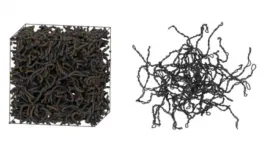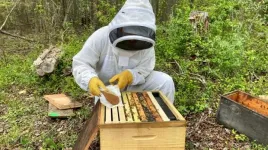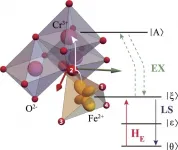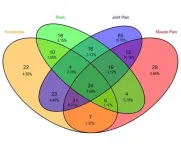(Press-News.org) A study examining Japanese schools' hands-off approach when children fight showed it could create opportunities for autonomy and encourage ownership of solutions, suggesting a new strategy in handling kids squabbles in other countries.
Called mimamoru, the pedagogical strategy is a portmanteau of the Japanese words mi, meaning watch, and mamoru, meaning guard or protect. It is generally understood as "teaching by watching" -- where adults, including early childhood educators, intentionally let kids handle disagreements on their own to promote their learning through voluntary exploration and actions. While not an official part of Japan's early childhood education and care (ECEC) curriculum, it is treated as an implicit guideline. The approach reflects Japanese socialization practices at home and school, where it is a norm for grownups to wait for children to respond to problems and guide them to take ownership of their learning.
"This study aims to understand the reason why Japanese early childhood educators tend not to intervene, and how and in what contexts they do," said study author Fuminori Nakatsubo, ECEC specialist and associate professor at Hiroshima University's Graduate School of Humanities and Social Sciences.
The researchers said insights gleaned from exploring the mimamoru approach could provide educators with fresh perspectives on disciplinary practices, particularly in countries where direct and immediate intervention is prioritized.
Maximizing learning through minimal intervention
A total of 34 Japanese and 12 US early childhood educators participated in focus groups that used modified video-cued multi-vocal ethnography methods to scrutinize the non-intervention strategy. After watching a three-minute clip showing it in action at a private preschool in western Japan, the international mix of educators discussed non-verbal cues exhibited by the students and teachers and the timing of intervention. Their findings are published in the Early Childhood Education Journal.
It may seem counterintuitive to just stand by when youngsters are in a tussle. But the approach sees conflicts as a valuable opportunity for learning which adults can rob kids from gaining if they immediately intercede. Stepping in and judging kids' behaviors may also inadvertently set them up as good and bad, impacting relationships negatively.
The study noted that allowing children to experience a feeling of "It hurts!" (physical pain) or "Oh no, I shouldn't have done it!" (guilt) can be a teachable moment that physical fights do not solve any problem.
Mimamoru's three major characteristics
The researchers, however, clarified that "watching" doesn't mean that adults ignore the safety of children. Japanese educators intervene when the risk of physical harm caused by fighting is greater than the benefit for children to learn.
Japanese and US educators highlighted mimamoru's three major characteristics: temporary, minimal intervention to reduce the immediate risk of physical harm; non-intervention or staying out of the fight to encourage kids to solve their problem; and non-presence or leaving the children by themselves once determined that they can sort out their dilemma without adult support.
Selecting which to apply among these three relies heavily on an educator's patience in balancing benefits vis-a-vis threats, careful observation of behaviors, and trust in the children's capacity to learn from their own experiences.
"Although the mimamoru approach looks passive, it rather challenges educators to remain patient, watching and waiting for children to think and act on their own. An underlying assumption of this Japanese practice is adults' trust in children's inherent goodness, more specifically, their ability to learn through everyday social interactions," the researchers explained.
"In other words, children learn through their exploration of autonomy under the protection of adults."
US participants in the study raised how policies to protect children from any physical harm may not allow educators in their country to wait for kids to solve their own problems. But they recognized that it might be worth trying it out in their classrooms once they secured parental consent and applied some modifications that fit with the country's educational and policy contexts.
Nakatsubo said he hopes their research revealed the "hidden strengths" inherent in the approach of Japanese educators.
INFORMATION:
While DNA is often idealised as the "molecule of life", it is also a highly sophisticated polymer that can be used for next-generation materials. Beyond the fact that it can store information, further fascinating aspects of DNA are its geometric and topological properties, such as knotting and super-coiling. Indeed, very much like a twisted telephone cord, DNA is often found coiled up inside bacteria and other cells and even knotted in viruses. Now, a collaboration of scientists from the Universities of Edinburgh, San Diego and Vienna have started to harness these properties to craft "topologically ...
MISSOULA - In bear country, it's normal to find bruins munching down on temptations left out by humans - from a backyard apple tree to leftovers in the trash bin - but these encounters can cause trouble for humans and bears alike. One method to reduce human-bear conflicts is to secure attractants like garbage and livestock feed.
While effective when implemented, this approach requires people to change their behavior, and that makes things a little more complicated.
University of Montana researchers recently published a new study in the Journal of Wildlife Management analyzing why landowners do or don't secure attractants in bear country. ...
Ishikawa, Japan - Protons--subatomic particles with a positive electric charge--are one of the first particles to have formed after the universe began and are a constituent of every atom today out there. The movement of protons plays a key role in energy conversion processes, such as photosynthesis and respiration, in biological systems. In addition, proton conduction is an important factor for hydrogen fuel cells, which are often touted as the ideal clean energy source for the next generation.
High proton conduction observed in biomaterials such as sugar and protein derivatives is attributed to the presence of proton-donating functional groups (substituents in a molecule that governs its characteristic ...
ITHACA, N.Y. - A Cornell University-developed technology provides beekeepers, consumers and farmers with an antidote for deadly pesticides, which kill wild bees and cause beekeepers to lose around a third of their hives every year on average.
An early version of the technology ¬- which detoxified a widely-used group of insecticides called organophosphates - is described in a new study, "Pollen-Inspired Enzymatic Microparticles to Reduce Organophosphate Toxicity in Managed Pollinators," published in Nature Food. The antidote delivery method has now been adapted to effectively ...
The authors, Kirill Vasin and Mikhail Eremin, contribute to the theory of electronic and structural properties of FeCr2O4 ferrimagnet. Due to the specific quantum state and the symmetry of FeO4 fragment, it has unusual electric and magnetic properties. Below TOO~150K, it lowers the symmetry with the macroscopic deformations due to the cooperative Jahn-Teller effect. The coupling between macroscopic deformation of the crystal FeCr2O4 and its inner ions shifts was revealed. The team enhanced the microscopic crystal field theory for 3D electrons with Kleiner's correction - the effect of penetrating charges density. It allows to have better prediction of electron-deformation ...
In a paper published in NANO, the author reviewed many kinds of nanofibrous filters including the component, preparation process, and application performances to provide directional guidance for improvement of the air purification field.
Poor air quality is worldwide recognized as one of five health risks for causing adverse impacts on human health. Nanofibrous membrane is competitive to capture unclean nanoparticles since its lightweight, small diameter, high specific surface area, and easy to combine with functional additives. However, the trade-off between high filtration efficiency and low pressure drop posts challenge.
The removal mechanisms of fibrous filters to nanoparticles follow ...
How to construct the dual emission nitrogen-doped carbon dots (CDs) by a simple method? Professor Lili Ren with her collaborators proposed a new strategy to prepare such materials which were used to the detection of dopamine.
The traditional ratiometric fluorescence (FL) probe usually needs to combine different nanomaterials by chemical or physical methods and the manufacturing process is more complicated. While the dual-emission carbon dots (DECDs) can simplify the detection process. Therefore, it is of great significance to design a simple ratiometric fluorescence probe based on the DECDs for the accurate determination of DA concentration. ...
Singapore University of Technology and Design (SUTD) researchers have uncovered how the environment can impact highly sensitive quantum behaviours like localisation. Their findings, published in Chaos, could lead to future innovations in the design of superconducting materials and quantum devices, including super precise sensors.
Quantum technology, in particular quantum sensing, promises to measure and capture our world at levels of precision never before possible. Such precision has diverse applications, from speedier and more sensitive medical imaging to recording time on high-frequency ...
In the Philippines, in the early months of the COVID-19 pandemic, there occurred a supply shortage of hydroxychloroquine and methotrexate. Limited access to medication and the life changes caused from the COVID-19 pandemic may prompt patients with rheumatoid arthritis (RA) or systemic lupus erythematosus (SLE) to experience disease flares.
The researchers investigated self-reported symptoms of disease flares among patients with rheumatoid arthritis or systemic lupus erythematosus during the COVID-19 pandemic. They collected information through online surveys from 512 patients with SLE or RA. The data included ...
The Montreal Heart Institute (MHI) announces that the COLCORONA study results are published today in The Lancet Respiratory Medicine. The article, which is entitled Colchicine for community-treated patients with COVID-19 (COLCORONA): a phase 3, randomised, double-blinded, adaptive, placebo-controlled, multicentre trial, concludes that, given the lack of oral therapies available to prevent COVID-19 complications among non-hospitalized patients and the observed benefit of colchicine in patients with a PCR-confirmed diagnosis of COVID-19, this anti-inflammatory drug could be considered as a treatment for those at risk of ...






